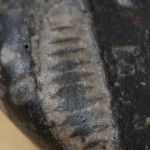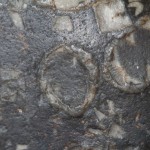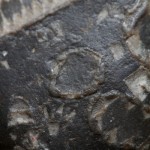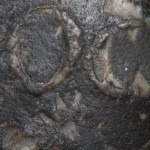I’m just back from a very cold week in New York. A few interesting results. The first is a reasonably pleasing shot from Manhattan [taken from the 52nd floor of a downtown hotel] looking towards Brooklyn:
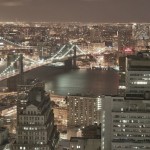
Brooklyn HDR
This is bracketed around a 5 second shot at F5. Shooting through glass has caused a few distortions, especially with the red fluorescent light towards the top right. I think it’s still quite a nice shot though.
I had some time to myself so spent an afternoon in Manhattan last Sunday waiting for sundown for a few long exposures to take shape. As you do! Anyway, my original plan was to take some stock shots of the Chrysler building, so I spent a bit of time trying to get a reasonable vantage point [I settled on 44th and 3rd]. But unfortunately, a particularly dull sky and unpleasing composition means that the results were all destined for the cutting room floor. I walked quite a long way [down to the PATH station at the World Trade], and stopped off at 35th and 3rd to take this shot of the Empire State:
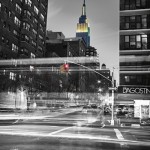
Empire State HDR
This is bracketed around a 13 second exposure at F14, and towards the ‘narrower’ end of my 10-22. There’s a lot going on in the foreground with the motion blurs from the passing traffic, but I quite like the effect. I decided to pull the Superbowl themed colour of the Empire State back into the shot as well.
Finally, I picked up an intervalometer when I was in town. I went for a cheap and cheerful 3rd party manufacturer rather than Canon’s own and it is a fantastic little piece of kit.
Here is a link to the results of my first time lapse, which is comprised of around 1450 exposures [at which point the battery expired]. I read up on this and used a couple of tricks to extend the battery, and go some way towards reducing the wear and tear on the camera’s moving parts. It’s shot in Liveview mode, so no need for the mirror to flap with each shot. I also plugged in the external monitor cable to fool the camera into turning off the LCD. Google this: there are lots of tips around. Each image here is an 8 second manual exposure, with the intervalometer set to a 10 second gap. I set the white balance to whatever preset was returning the most similar result to the auto setting.
For creating the animation I played around with a few Mac specific options. iMovie has a limited maximum framerate available. Default is 0.2 seconds, but I think I read somewhere you can get this up to 15. I had a brief play with ffmpeg, before running into some compiler issues that I could have fixed but, frankly couldn’t be bothered to work around [I basically needed to do a full re-install of the Xcode tools]. So I settled on the lazy option which was to upgrade to Quicktime Pro.
This was fine for producing a .Mov file at the desired 24 frames per second, but it seems to hang when trying to convert to MP4. I haven’t figured this out, but I’m guessing that it is sulking either over the frame rate or the dimensions. It’s a bit annoying because there is a lot of compression in the YouTube version, and it would look pretty good on my iPad. I’m going to persist with this and see if I can figure it out.
I guess the process is more interesting than the result :). My original idea was to leave it running overnight to create an animation of intensive building work that is taking place in lower Manhattan, but a change of hotel plans meant that I was in Jersey by the time I got my hands on the intervalometer.
Automatic exposure, for the more interesting transition from night to day [for instance] requires post processing to remove the flickering that results from the variations in metering. I haven’t discovered an affordable way of doing this, as I don’t fancy splashing out for professional video processing software to flatten this out.

